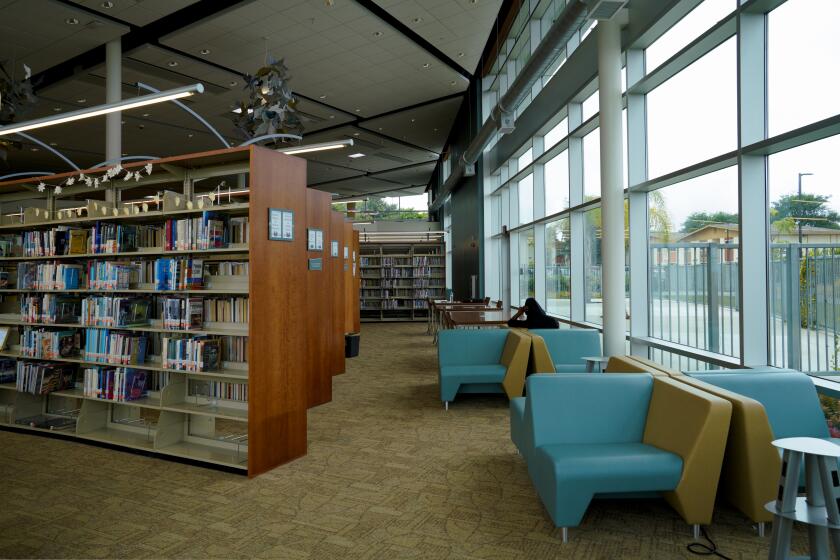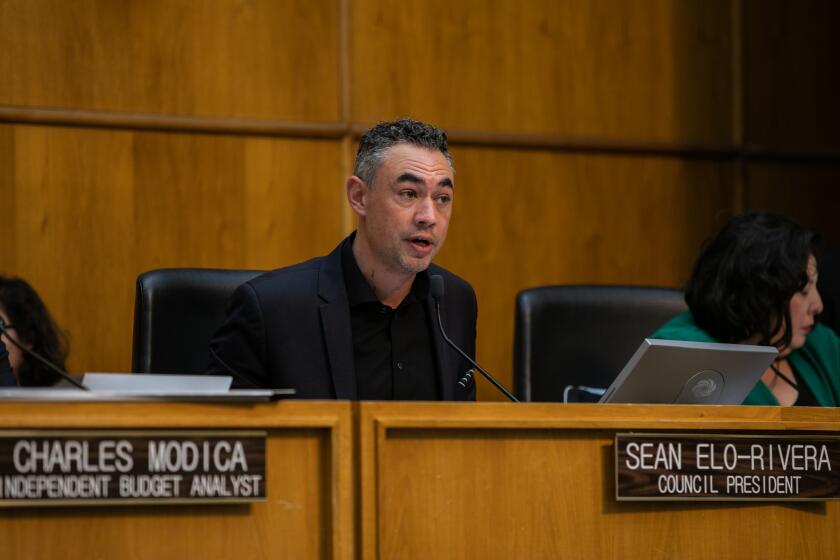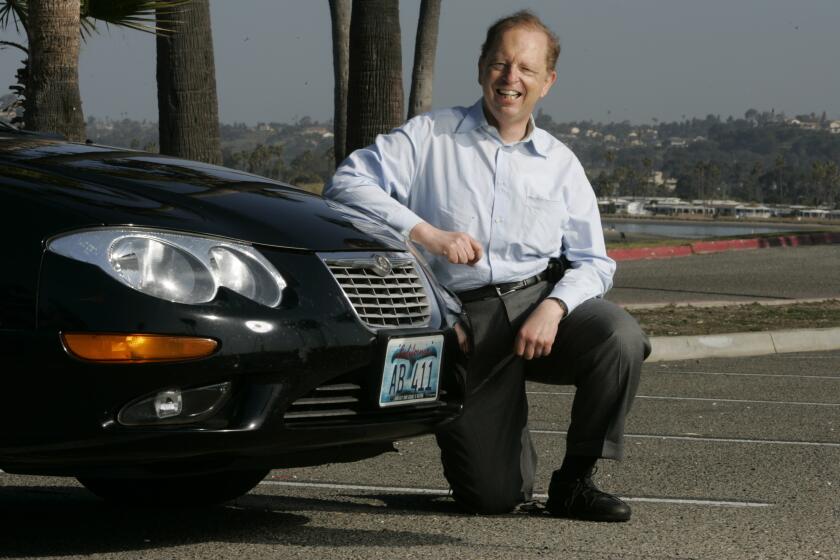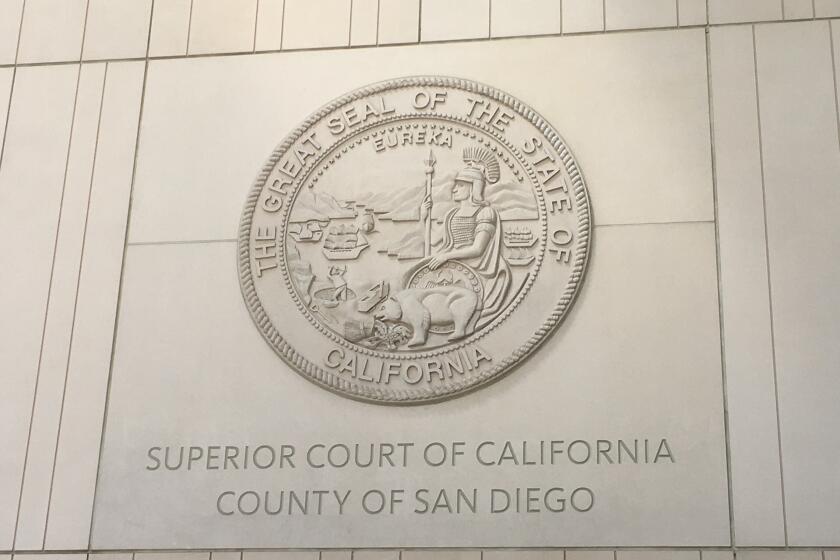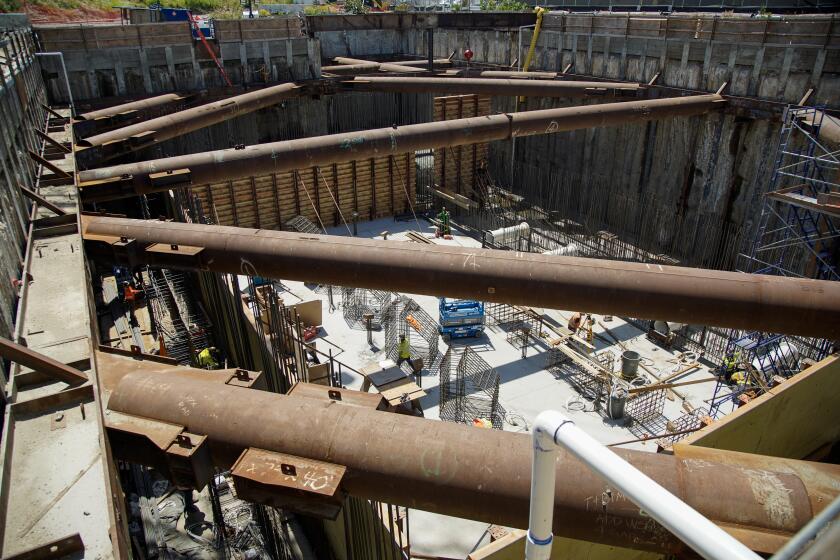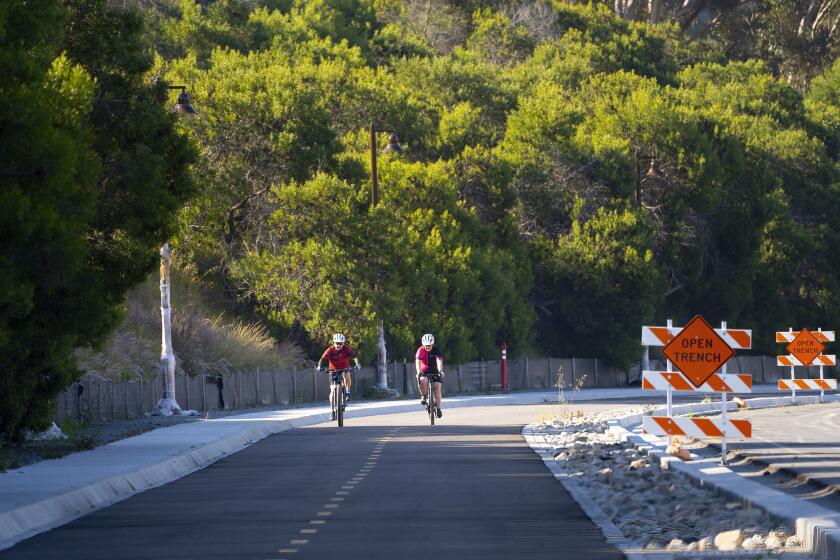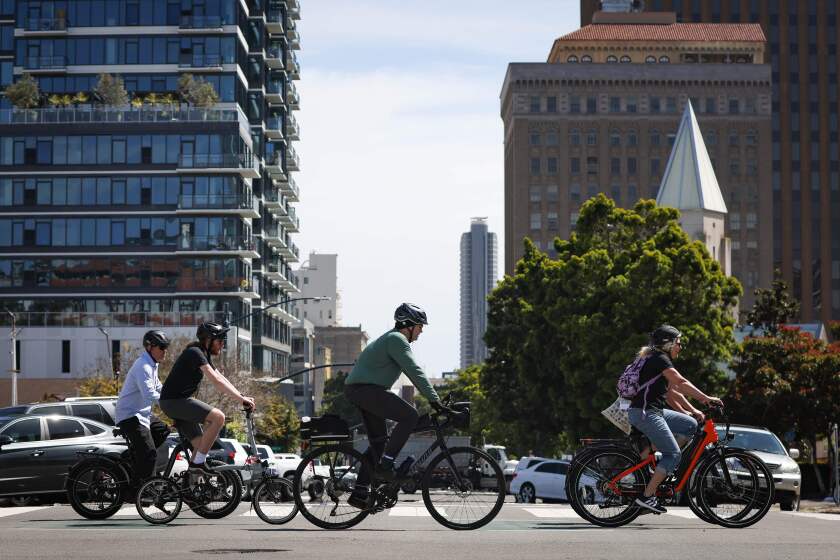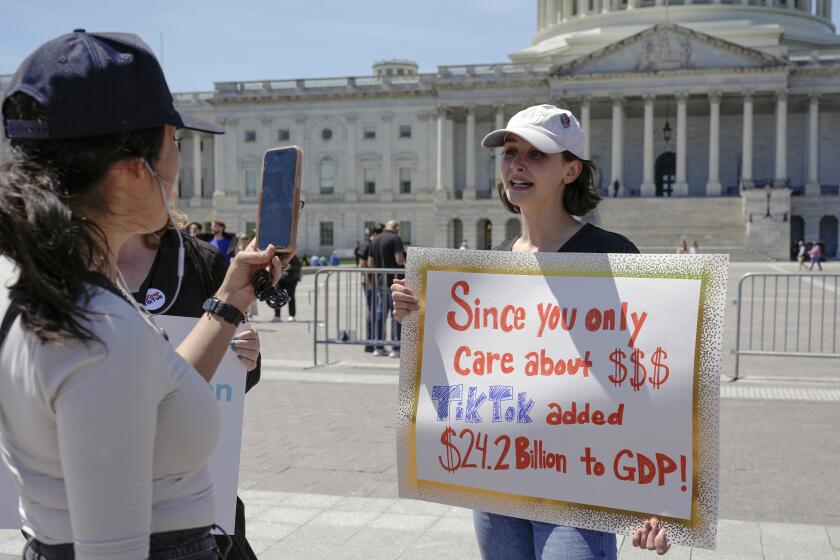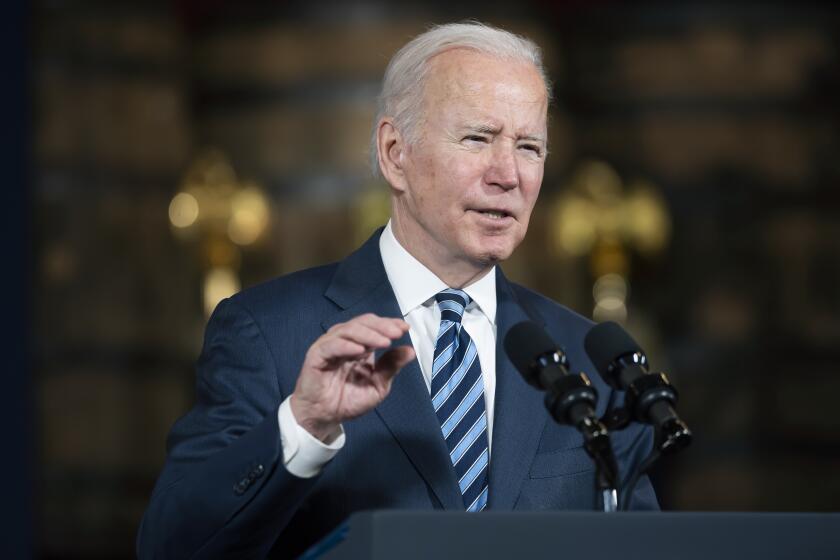More repaving, fewer patches: San Diego cracks down on road trenching to boost street quality and safety
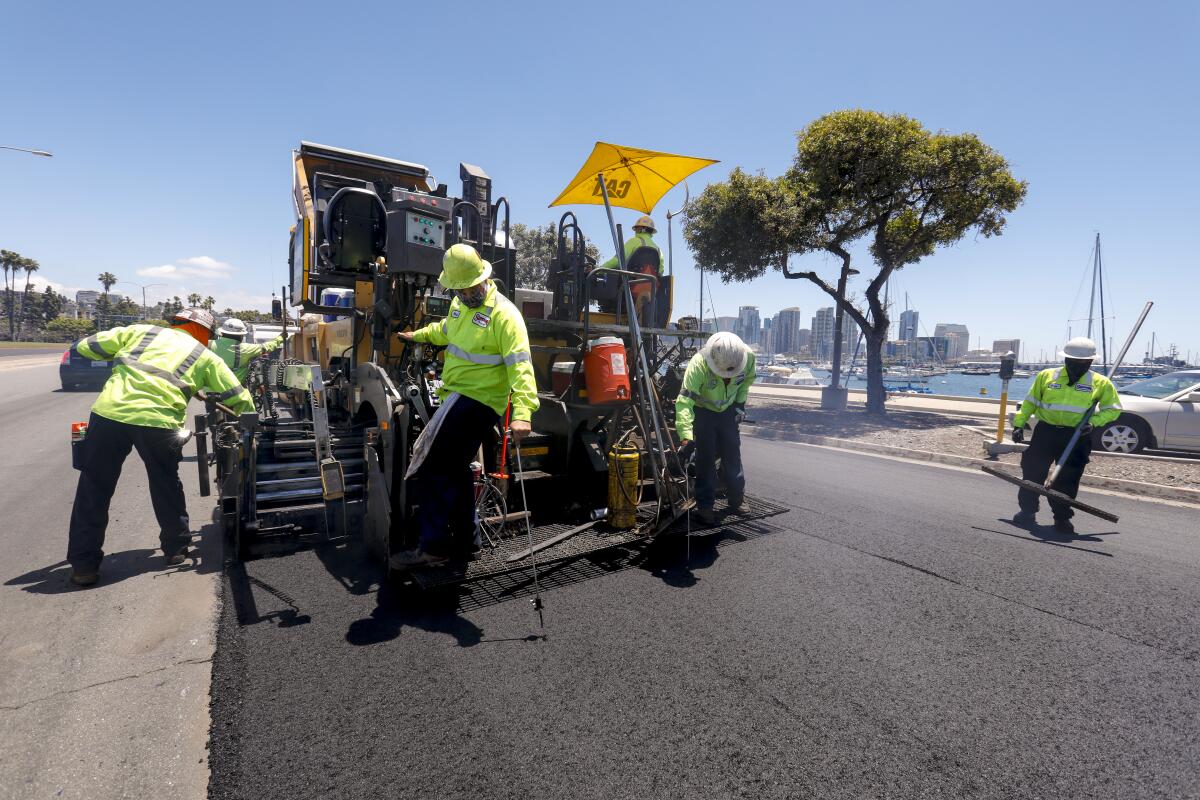
The proposal would sharply increase fees paid by utility companies and would require faster and more comprehensive fixes to city streets.
Aiming to boost the quality of San Diego’s crumbling streets, city officials are planning a crackdown on damage caused by increasingly frequent road trenching to lay cable, fix streetlights, repair pipes and do other work.
Changes proposed to the city’s street preservation law would sharply raise damage fees charged to companies who dig trenches in city streets. The goal is boosting the city’s cost recovery for trench repair from 50 percent to 100 percent.
“The discount that’s been provided means city taxpayers have to make up the difference,” said Mayor Todd Gloria, who is spearheading the proposed policy change.
Repairs would also have to be completed more quickly and companies would more often be required to do comprehensive asphalt overlays, instead of the less aggressive slurry seal fixes now typically required after trenching.
Minor upgrades to a street with slurry seal cost about $130,000 per mile, whereas a more fundamental asphalt overlay — which lasts longer and looks better — costs about $780,000 per mile.
Companies would also need to address broader areas of pavement than under current city policy. That’s partly because studies show that even narrow trenches weaken wide areas of a street, making it vulnerable to potholes and premature decay.
The goals of the new policy are boosting safety, quality of life and neighborhood pride across San Diego, said Gloria, whose staff will present the proposed changes to the City Council’s infrastructure committee Wednesday.
“We’re trying to improve what San Diegans see every day right in front of their face, which includes streets,” Gloria said.
The new policy is also expected to reduce the millions San Diego spends annually to cover injury settlements from crashes caused by trenching and related road damage.
“This will mean more money for roads and less money for legal payouts,” Gloria said.
Following an earlier commitment to shifting some infrastructure spending toward low-income areas, the city’s new scoring system prioritizes areas with weak economic opportunity.
The proposed changes come as a consultant nears completion of a $700,000 survey to determine the condition and quality of all 3,000 miles of roads in the city. The survey’s goal is gearing repairs and upgrades to long-neglected roads.
Mayor wants to shift focus away from miles repaired to make paving, repairs more equitable
The crackdown on trenching has been endorsed by the city’s Mobility Board, which advocates for safer routes for bicyclists and pedestrians.
Andy Hanshaw, chairman of the board, said Monday that the board appreciates that the city is making it a priority to address the dangers for bicyclists created by trenching.
The proposed changes would also raise standards for temporary patches on pavement required for overnight road safety during long-term trenching projects.
In addition, companies would be required to fix more expensive concrete streets with entire concrete panels. Under the current policy, they have been allowed to repair concrete streets with asphalt.
The changes would also extend the city’s street preservation law to alleys, which haven’t previously been covered.
Street damage fees, which vary by the length of a trench and how recently the street was comprehensively overlaid, are typically in the low thousands per trench.
Recent analysis shows the fee has been generating only about half the cost to repair city streets damaged by trenching, forcing taxpayers to cover the other half.
When the City Council adopted the street preservation law in 2013, a compromise with industries that conduct frequent trenching called for incrementally increasing damage fees to reach 100 percent cost recovery eventually.
But city engineering officials never followed through on raising the fees, which have remained the same since 2013. And some policies in the ordinance were never enforced, or were enforced more leniently than the rules called for, city officials said.
“We passed a law nearly 10 years ago that didn’t fully address the problem,” Gloria said.
Officials said they’ve held several recent meetings with industry leaders to explain the proposed changes. But officials say they still expect some pushback at Wednesday’s committee meeting.
In addition to the proposal for sharply higher street damage fees, industry officials object to a policy that would encourage companies to do more joint trenching.
Joint trenching allows multiple projects to be completed with only one trench damaging a street. But industry officials, primarily for competitive reasons, don’t like to let others know when they will be trenching or why.
Get Essential San Diego, weekday mornings
Get top headlines from the Union-Tribune in your inbox weekday mornings, including top news, local, sports, business, entertainment and opinion.
You may occasionally receive promotional content from the San Diego Union-Tribune.
